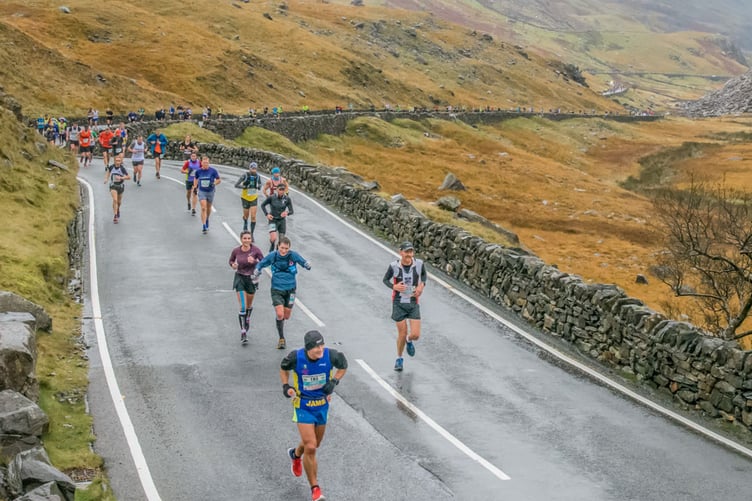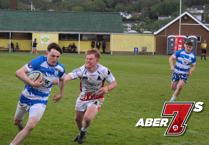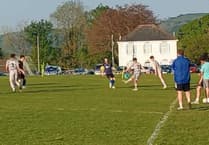A recent study by New Balance has revealed that the Snowdonia Marathon Eryri is the fourth toughest in the UK, based on the number of runners that failed to finish the race.
The data revealed that Langdale Marathon is the UK’s toughest with the highest percentage of DNFs. 15% of runners that entered Langdale fail to finish the race.
The race is situated in the heart of the Lake District with runners facing an elevation gain of 1,036m (3,399ft), ranging from mild up- and down-hills, to steep climbs and drops, and no flat terrain.
In second place was the ABP Southampton Marathon, which has a DNF percentage of 5.3% and in third was the Abingdon marathon where 4.8% of runners failed to cross the finish line.
The Snowdonia Marathon has a 2.5% DNF percentage.
The inaugural Snowdonia Marathon was held in 1982, and was conceived as a dramatic alternative to the numerous city and town races becoming so popular.
The demanding and spectacular route, encircling Snowdon, Wales’ and England’s highest peak, has given the event a unique place in the annual marathon calendar ever since.
Snowdonia Marathon Eryri has an elevation gain of 933 meters (3,061 ft).
The halfway hurdle takes out over half of those that don’t finish the marathons
The research also revealed that over 65% of people that drop out will do so after the halfway point (13.11 miles). After this, the most significant marker for participants dropping out was mile 23.
Numbers suggest that female runners may be more resilient when it comes close to the finish line, with 16% of men that DNF dropping off just 3 miles before the finish line compared to 5.4% of women.
Typically, after the halfway point, the human body has used up all the stored carbohydrates and glycogen and begins using fat as energy. The body having depleted all reserves of glycogen instigates feelings of physical and mental exhaustion, this phenomenon is called "hitting the wall", and it happens to amateur runners more when they enter a race without serious preparation.
Jonny Mellor, a New Balance marathon runner explains: “There’s a big difference between running a half marathon and a marathon.
"There are a lot of reasons why people can’t get to the finish line.
"Often, the reason behind it is the lack of energy. If runners aren’t fueled enough, they can reach the half distance, but after that, they can no longer continue.
“Another reason for not finishing is not respecting the distance. Marathon is a hard race and requires a firm training plan that includes recovery time and resting. Not preparing seriously leads to not finishing.”
But amateurs should not take off their running shoes and be deterred by the possibility of not finishing. In this year's London Marathon, even a quarter of elite runners did not finish the race.
Mellor highlights the weather conditions and the “hilliness” as crucial factors for success or failure.
Conditions are a huge contributing factor to success or failure
Elevation is not just a toughness factor in Langdale, another national park offers a similar challenge – at Snowdonia Marathon Eryri there is an elevation gain of 933 meters (3,061 ft).
Mellor added: “Whether it’s a hilly course opposed to a flat one, that makes a difference. This summer I was running the Commonwealth Marathon in Birmingham where I had to bear in mind the last 5 kilometers are all uphill. It makes a race harder.”
If a runner has only trained on track and flat road, hills can wear them down physically and mentally. On the way up, more energy is used; and different muscles are worked between going up and down.
According to researchers, a perfect marathon day has temperatures between 10 and 17.5 C. Any temperature that's higher than that declines performance by 0.3% to 0.4%. Wind and heavy rain are also factors which can affect performance.
Methodology
The study by New Balance looked at 22,000 available marathon race results published on specific UK marathon race websites. DNF (did not finish) results were extracted from race results and turned into percentages based on the number of overall participants.





Comments
This article has no comments yet. Be the first to leave a comment.